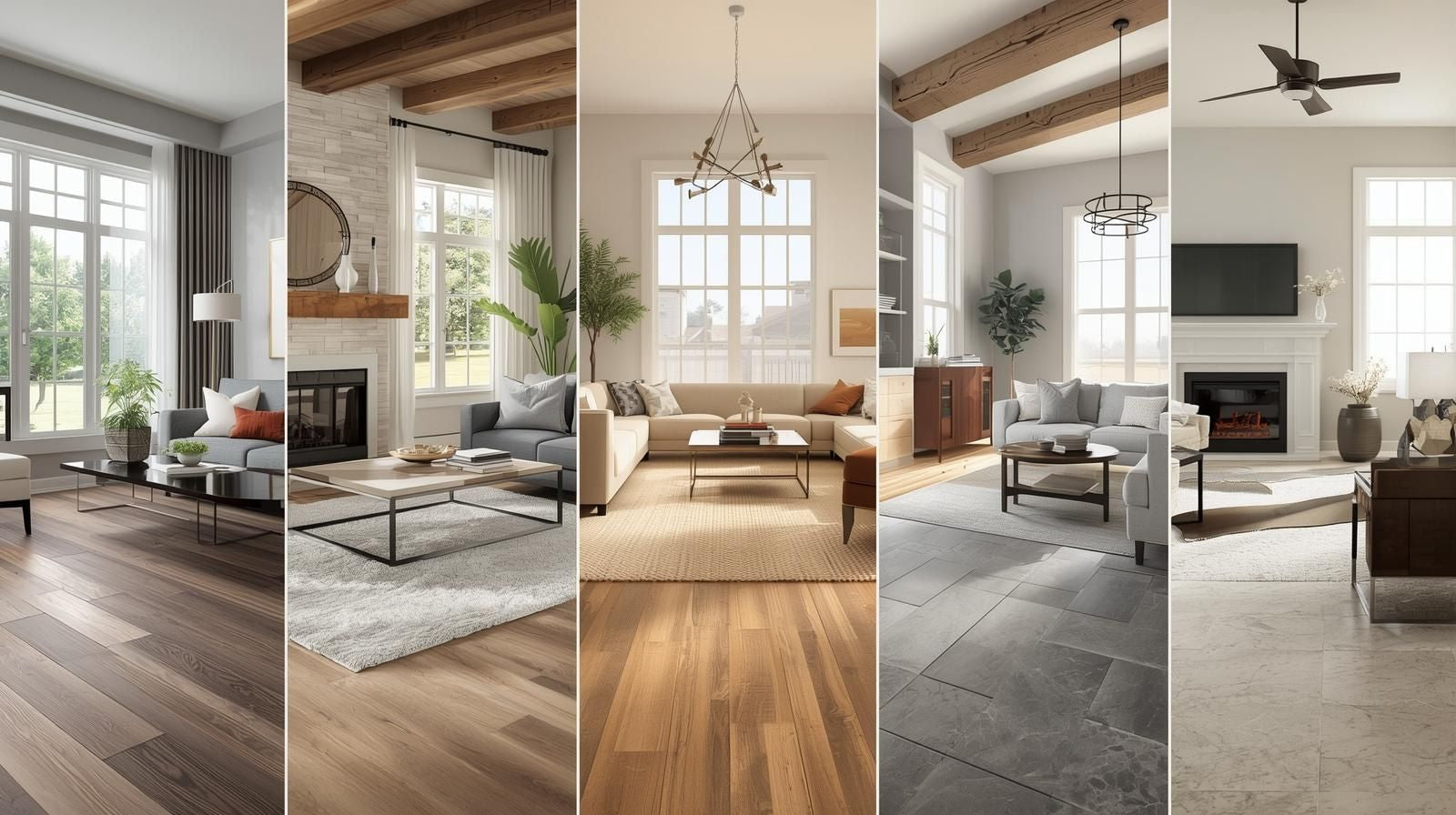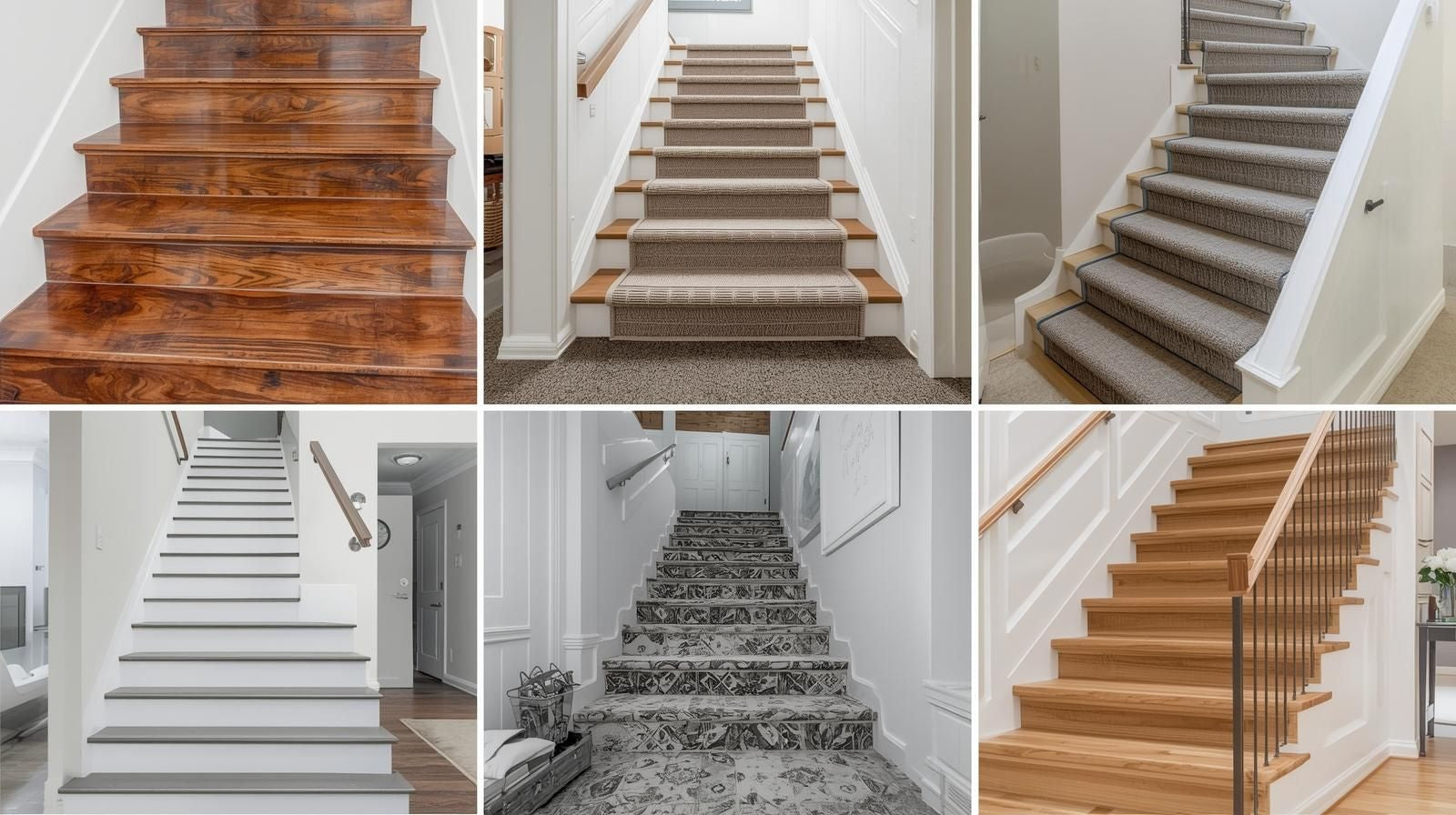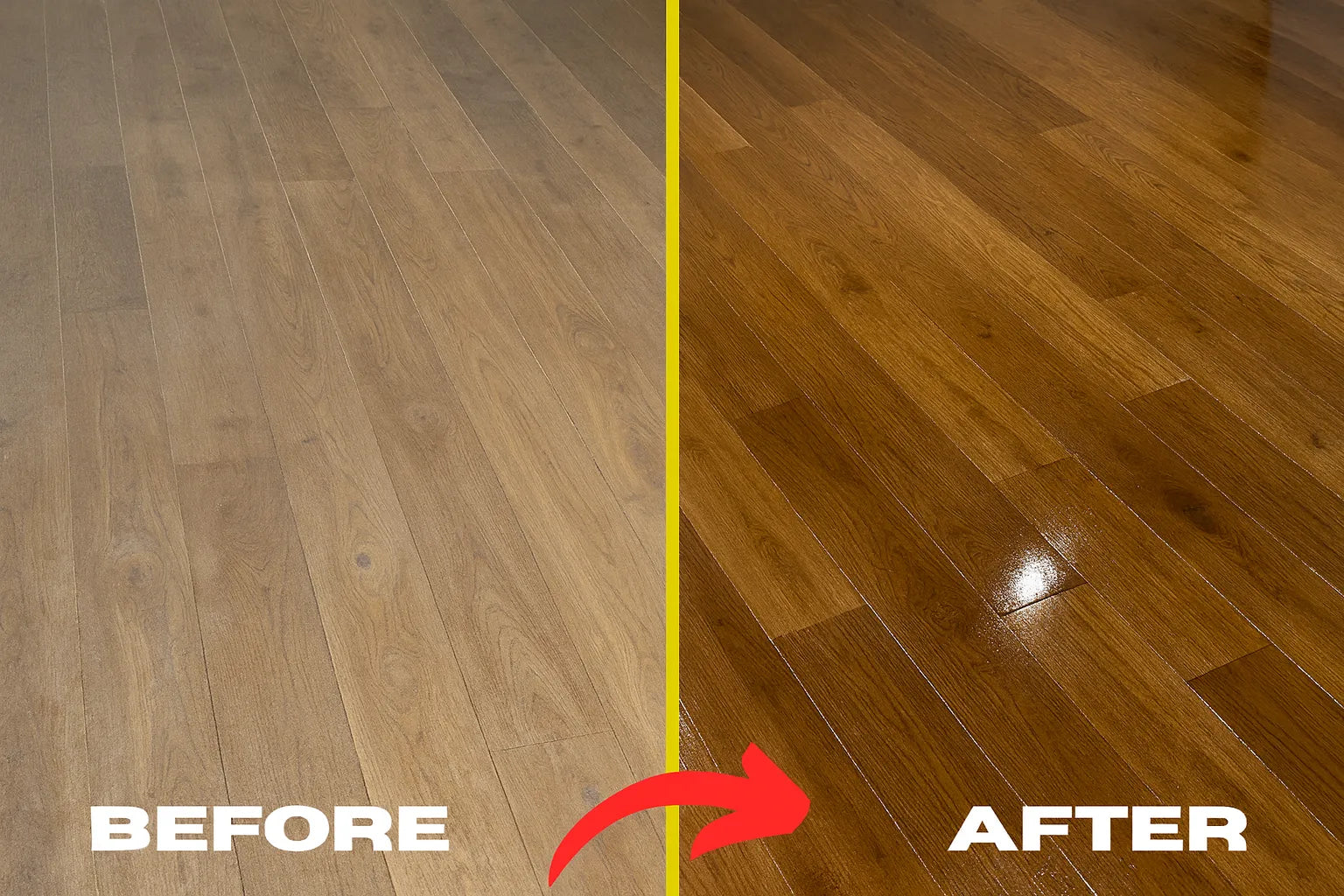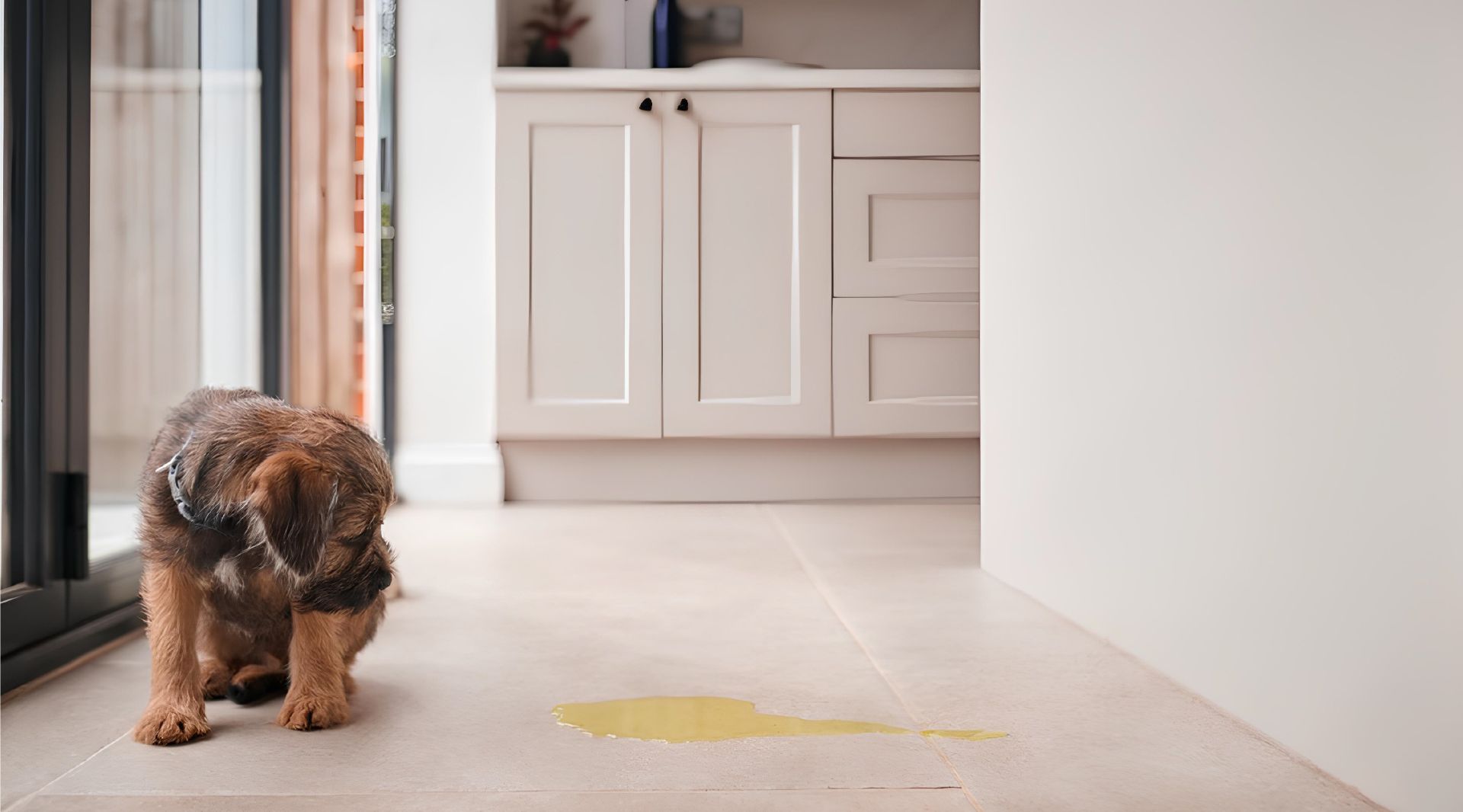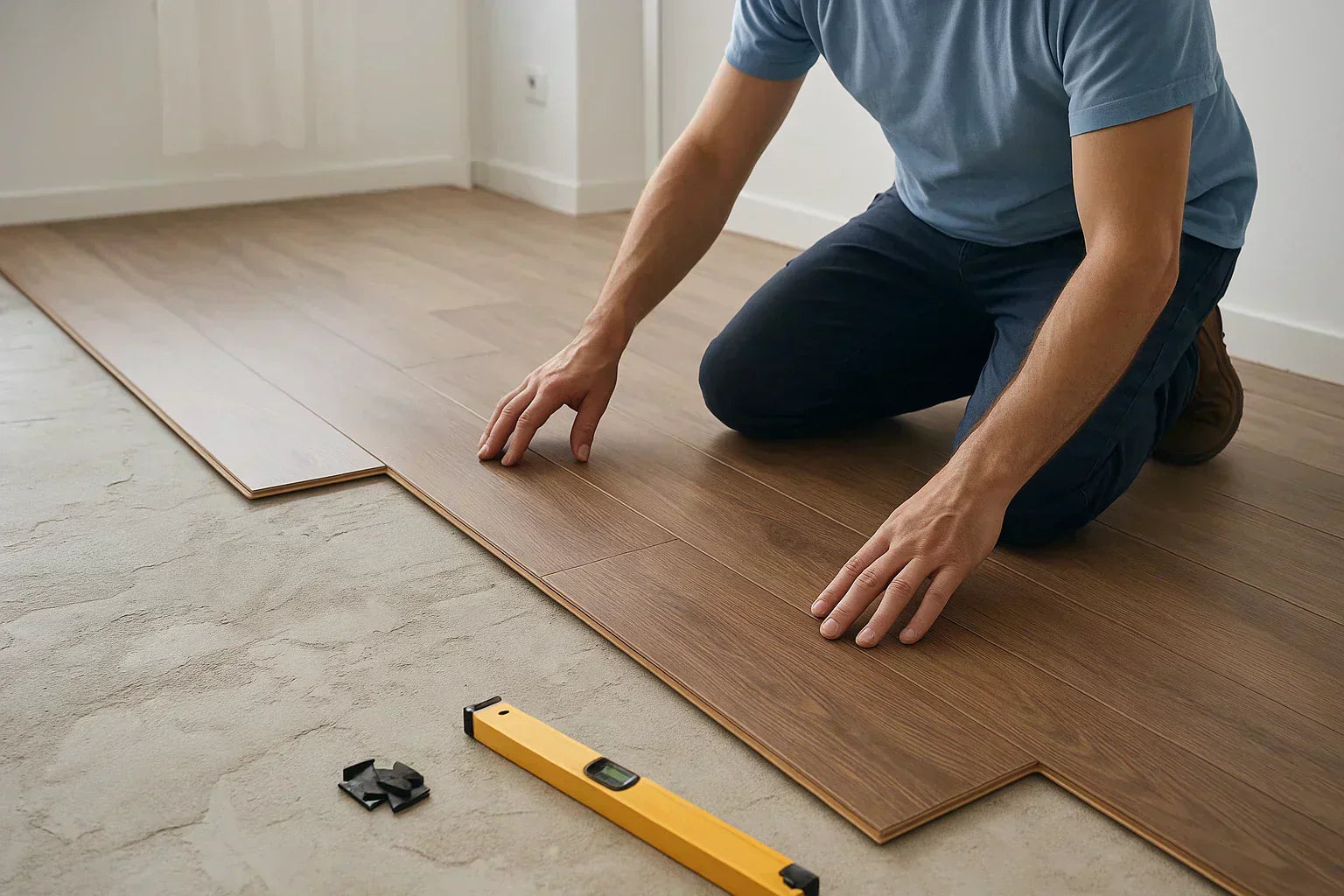Vinyl flooring is far improved, quite versatile, and the truth is, a little bit trendy too. Long gone are the days of what was once considered a simple, economical choice to bring into your home; today, vinyl floor stands as one of the most diverse, trendy, and high-performing options available for homes. Choose natural appearance vinyl or contemporary vinyl with wood-like textures that are perfect for formal spaces to withstand everyday messes.
Modern flooring has changed the game in a big way. Waterproof luxury vinyl can copy the warmth of real wood almost perfectly. Fully waterproof sheets work well in bathrooms and basements where moisture matters most. These choices move far beyond a single standard option and give homes real freedom.
And with so many choices out there, how do you know which one is right for your space?
This guide will take you through the various kinds of vinyl flooring, their uniqueness, their shine, and performance under real-life conditions.
1. Luxury Vinyl Plank (LVP)

- Appearance: Mimics hardwood flooring.
- Features: Realistic textures and visuals, water-resistant or waterproof, and durable.
- Ideal For: Living rooms, bedrooms, kitchens, and basements.
If you want a wood-like floor, LVP (Luxury Vinyl Plank) is the answer. It has layers that give it strength and realism. One layer shows the wood look, while others make it firm. WPC or SPC materials are often used.
LVP from different brands mimics the beauty of hardwood floors while offering durability and water resistance. It’s ideal for living rooms, bedrooms, kitchens, and basements. You need to be careful while choosing a floor and avoiding the worst vinyl flooring brands.
Why choose LVP:
- Realistic wood textures without the maintenance of real wood
- Water-resistant or waterproof, perfect for moisture-prone areas
- Easy click-lock installation for DIY projects
- Offers warmth and elegance without sanding or sealing
Things to consider:
- Subfloor must be level for smooth installation
- Quality varies, so check wear layers for longevity
- Not as hard as real hardwood, may dent under heavy furniture
2. Vinyl Tile Flooring (VCT or LVT)

- Appearance: Designed to resemble natural stone, ceramic, or porcelain tile.
- Features: High-end aesthetics with a softer feel underfoot than real tile.
-
Ideal For: Bathrooms, kitchens, and entryways.
Vinyl tile flooring appears in two styles commonly used in most homes and commercial areas. VCT is an old-fashioned and commonly used type of tile, vinyl composition. LVT and LVP belong to the category of luxury vinyl tiles and planks and introduce a more contemporary appearance and feel to the floor.
VCT is often found in commercial spaces. It consists of limestone, PVC resins, with the addition of a few other fillers. This is the kind of tile that also needs waxing and care to maintain its appearance.
Why choose Vinyl Tile:
- LVT/LVP offers many design patterns and layouts (herringbone, straight rows)
- VCT is durable for commercial spaces
- Easy to replace individual tiles if damaged
- Softer feel underfoot compared to real tile
Things to consider:
- VCT requires waxing and ongoing maintenance
- Ensure proper adhesive for a long-lasting installation
- Some vinyl tiles may fade in direct sunlight
3. Sheet Vinyl Flooring

- Appearance: Comes in large, continuous rolls with fewer seams.
- Features: Affordable, water-resistant, easy to clean.
-
Ideal For: Bathrooms, laundry rooms, and kitchens with high moisture.
Wide rolls are how sheet vinyl flooring is commonly made, usually stretching 6 to 12 feet across. That size leads to fewer joints across the floor. Water stays better controlled when seams are limited, which suits moisture-prone rooms such as bathrooms and laundry rooms.
Why choose Sheet Vinyl:
- Affordable and budget-friendly
- Water-resistant with fewer seams to prevent leaks
- Easy to maintain and clean
- Available in a variety of woods, stones, and fun patterns
Things to consider:
- Requires careful measurement for proper installation
- Can be damaged by sharp objects or heavy furniture
- Some options may need adhesive for full coverage
4. Rigid Core Vinyl (SPC & WPC)

- Appearance: Mimics hardwood or stone with realistic textures and a dense, durable feel.
- Features: Waterproof, dent-resistant, stable under temperature changes, and easy click-lock installation.
- Ideal For: High-traffic areas like kitchens, hallways, and basements where durability and water resistance are key.
Rigid Core Vinyl belongs to the LVP and LVT family. This group includes Stone Plastic Composite (SPC) and Wood Plastic Composite (WPC) cores. SPC vinyl usually measures between 4mm and 5mm in thickness. A strong vinyl layer rests on a solid core made of limestone and stabilizers. This dense core gives the floor excellent shape control and strong resistance against dents. Many experts consider it one of the most stable vinyl flooring bases available today.
Why choose Rigid Core Vinyl:
- SPC: ultra-dense, dent-resistant, stable under temperature changes
- WPC: softer underfoot with built-in noise-reducing underlay
- Click-lock installation for easy DIY or professional installation
- Waterproof and perfect over uneven subfloors
Things to consider:
- SPC is harder underfoot than WPC
- Requires a clean, level subfloor for best results
- Usually more expensive than standard vinyl
5. Waterproof Vinyl Flooring (WPC & SPC)

- WPC (Wood Plastic Composite): Comfortable underfoot, great sound insulation.
- SPC (Stone Plastic Composite): Denser and more rigid, best for high-traffic areas.
- Features: 100% waterproof, highly durable, click-lock installation.
-
Ideal For: Entire homes, especially kitchens, bathrooms, and basements.
Waterproof Vinyl Flooring comes in a few new types, such as WPC (Wood Plastic Composites) and SPC (Stone Plastic Composite). This design variant has been created in order to provide sturdy yet high-performance results for both homes and business establishments.
Why choose Waterproof Vinyl:
- 100% waterproof, perfect for high-moisture areas
- WPC: soft and sound-absorbing for comfort
- SPC: strong, dense, and resistant to dents
- Built-in underlayment reduces noise and adds comfort
Things to consider:
- Heavier cores may require professional installation
- Ensure proper acclimation before installation
- Costs vary depending on core type and thickness
6. Peel-and-Stick Vinyl Tiles

- Appearance: Available in individual tiles that mimic ceramic, stone, or wood. May show seams more visibly.
- Features: Budget-friendly, DIY-friendly, no adhesive required (self-adhesive backing), easy to replace.
- Ideal For: Rental properties, budget-conscious renovations, or quick updates in low-moisture areas.
Peel-and-stick vinyl tiles can provide a new appearance to floors with no additional effort. It has a smooth surface of vinyl on the top and below it is the sticky layer which holds each tile firmly in place. The tiles might not be as long-lasting as SPC or LVT flooring, but they can be used by tenants or those who maintain a tight budget.
Why choose Peel-and-Stick Tiles:
- No adhesive or tools required, perfect for DIY
- Quick and affordable floor refresh
- Easy to replace individual tiles if damaged
- Available in many colors and patterns
Things to consider:
- Best for low-moisture areas
- Floor must be clean, flat, and dry
- Less durable than SPC, WPC, or LVT
Quick Comparison of Different Types of Vinyl Flooring
| Type | Mimics | Waterproof | Best For |
| LVP | Hardwood | Yes | Living rooms, bedrooms, basements |
| LVT | Stone/Tile | Yes | Bathrooms, kitchens, foyers |
| Sheet Vinyl | Varied patterns | Yes | Budget-friendly spaces, wet areas |
| VCT | Commercial tile | No (needs wax) | Commercial spaces |
|
WPC/SPC |
Wood/Stone | Yes | Whole house, high-traffic areas |
What Style of Vinyl Flooring is Best?
Your space deserves a floor that feels right and works hard. Room purpose, natural light, and design taste guide that choice. Durable vinyl with a wood finish delivers beauty without stress, and textures like weathered oak or hand-scraped hickory stay clean while standing strong against wear.
Matte-finish stone-look LVT brings a simple, minimalist feel to the more contemporary spaces. While peel-and-stick tiles in graphics or terrazzo patterns add a punchy and affordable refresh to small spaces and rentals.
For the wettest places, seamless sheet vinyl available in marble and concrete looks offers an even waterproof surface without visible seams. Choose a function and finish together.
Need personalized advice or ready to buy?
Give us a call at (833) 378-4559, and our flooring specialists will assist you throughout the process.





